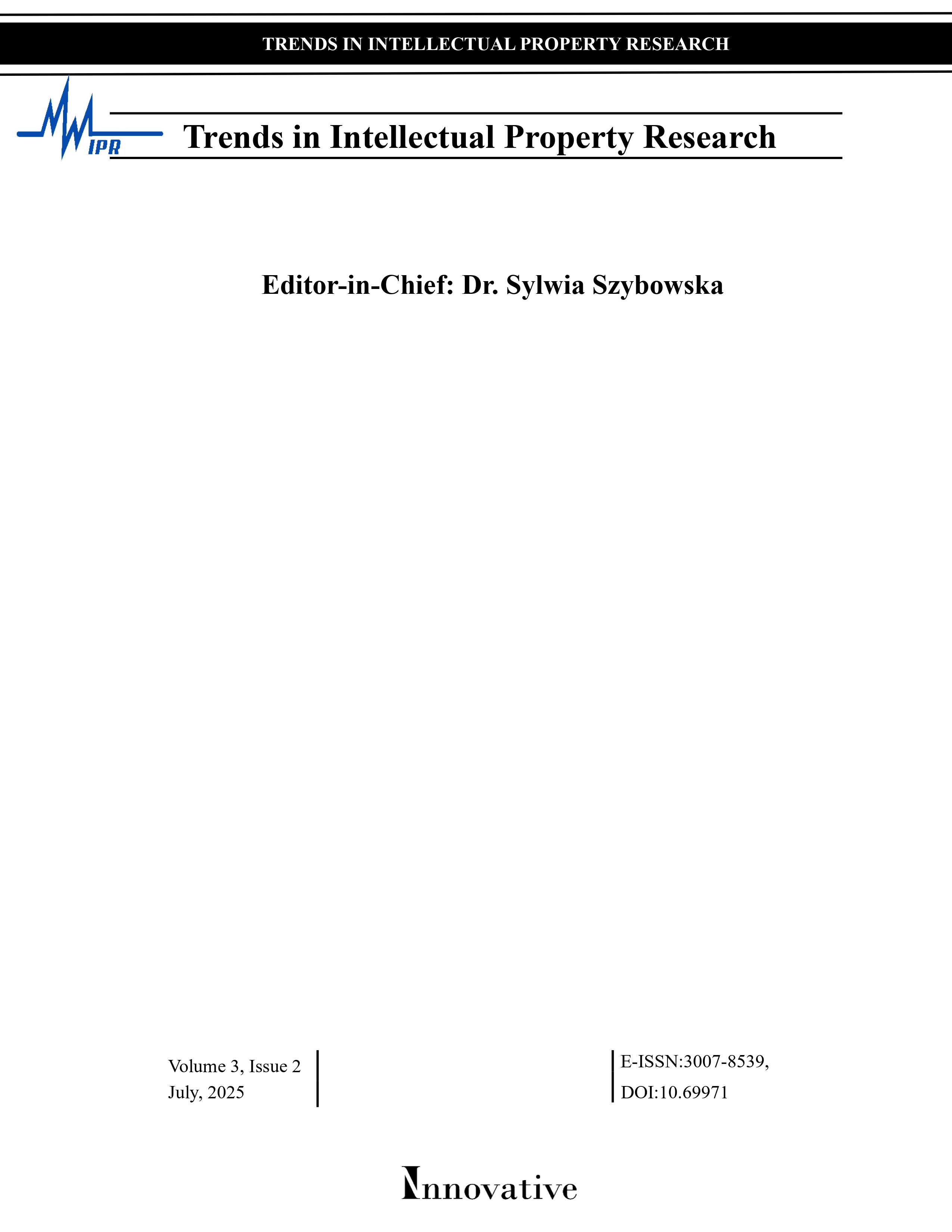Sundarban Honey as Geographical Indication of Bangladesh
DOI:
https://doi.org/10.69971/tipr.3.2.2025.46Keywords:
Sundarban Honey, geographical indication, Bangladesh, biodiversity, intellectual propertyAbstract
Sundarban Honey possesses distinctive nutritional, sensory and chemical characteristics that arise from the unique mangrove ecosystem of the Sundarbans. Sundarban Honey met the essential criteria of origin specificity, quality linkage and traditional expertise to get a GI tag. This article examines the ongoing dispute between India and Bangladesh regarding Geographical Indication (GI) tag of Sundarban Honey. It reviews the legal procedure for GI registration in Bangladesh under Bangladesh’s 2013 GI Act and compares the honey’s protection needs with those of Manuka Honey in New Zealand and EU designations such as Miel de Provence. The analysis identifies key challenges in weak institutional capacity, and lack of community organization that led to Indian claims on this product earlier than Bangladesh. It is recommended to strengthen traceability, empower local cooperatives, and enhance cross-border cooperation with Indian Sundarbans stakeholders. Sundarban Honey GI tag in Bangladesh will preserve cultural heritage, support rural livelihoods, advance biodiversity conservation and sustainable economic development.
Downloads
References
Amin, M.R., M.J.A. Nishat, M. Afroz and P Ghosh. 2019.Apiculture for sustainable agriculture: Bangladesh perspective. Bangladesh Journal of Ecology 1: 47-52.
Bhattacharya, Rajan. 2024. Sundarban Honey earns GI Tag for India over Bangladesh: what it means for West Bengal’s economy. https://www.slurrp.com/article/sundarban-honey-earns-gi-tag-for-india-over-bangladesh-what-it-means-for-west-bengals-economy-1731583872271
Bhattacharya, Debapriya, and Naima Jahan Trisha. 2024a. Bangladesh's shared GIs with India: The conflict and the outlook. The Daily Star. https://images.thedailystar.net/opinion/views/news/bangladeshs-shared-gis-india-the-conflict-and-the-outlook-3744526
Bhattacharya, Debapriya and Naima Jahan Trisha. 2024b. Here we go again: Sundarban honey is now an Indian GI product. The Business Standard. https://www.tbsnews.net/features/panorama/here-we-go-again-sundarban-honey-now-indian-gi-product-874111
Gaine, Tanushree,Praveen Tudu, Somdeep Ghosh, Shouvik Mahanty, Madhurima Bakshi, Nabanita Naskar, Souparna Chakrabarty, Subarna Bhattacharya, Swati Gupta Bhattacharya, Kashinath Bhattacharya and Punarbasu Chaudhuri. 2022. Differentiating wild and apiary honey by elemental profiling: a comparative study from the Indian Sundarbans. Biological Trace Elements Research 200: 4450–4569. https://link.springer.com/article/10.1007/s12011-021-03043-z
Halder, Sukanta. 2024. Move to get GI status for Sundarbans' honey finally gathers steam. The Daily Star. https://www.thedailystar.net/business/news/move-get-gi-status-sundarbans-honey-finally-gathers-steam-3645826
Islam, Md Rabiul, Tahmina Pervin, Hemayet Hossain, Badhan Saha, and Sheikh Julfikar Hossa. 2017.Physicochemical and Antioxidant Properties of Honeys from the Sundarbans Mangrove Forest of Bangladesh. Preventive Nutrition and Food Science 22:335-344. https://doi.org/10.3746/pnf.2017.22.4.335
Nandi, Soumitra.2024. ‘Sunderban Honey’ gets GI tag, certificates to be given soon. Millinium Post. https://www.millenniumpost.in/bengal/sunderban-honey-gets-gi-tag-certificates-to-be-given-soon-546928
Paul, Sudip, Md. Sakib Hossen, E. M. Tanvir, Rizwana Afroz, Delwar Hossen, Sagarika Das, Nikhil Chandra Bhoumik, Nurul Karim, Farha Matin Juliana, Siew Hua Gan, and Md. Ibrahim Khalil.2017. Minerals, toxic heavy metals, and antioxidant properties of honeys from Bangladesh. Journal of Chemistry Article 6101793. https://doi.org/10.1155/2017/6101793
Rahman, M.R., and M.Asaduzzaman, 2013. Ecology of Sundarban, Bangladesh. Journal of Science Foundation 8: 35–47. https://doi.org/10.3329/jsf.v8i1-2.14618
Sarker, Nandita, Muhammed Alamgir Zaman Chowdhury, Abu Naieum Muhammad Fakhruddin, Zeenath Fardous, Mohammed Moniruzzaman, and Siew Hua Gan. 2015. Heavy metal contents and physical parameters of honeys from Bangladesh. BioMed Research International Article 720341. https://doi.org/10.1155/2015/720341
Singh, Ayodhya Prasad. 2024.Community Connect Through Conservation: Sundarbans’ GI Tag for Honey, Biodiversity, and Sustainable Prosperity. https://indianmasterminds.com/feature-stories-on-bureaucrats-changemakers/sundarbans-unique-ecosystem-gi-tag-for-honey-sustainable-tourism-and-community-prosperity-94192/
Uddin, M. T., M. Z.I. Kamal, and M. Kamruzzaman. 2022. Value chain analysis of honey in Bangladesh: Production practices and livelihood per-spective. SAARC Journal of Agriculture 19: 301–315. https://doi.org/10.3329/sja.v19i2.57689
World Bank. 2020. Value chains and market access for GI products in Bangladesh. World Bank Publications. https://www.worldbank.org/en/publication/wdr2020
Downloads
Published
Issue
Section
License
Copyright (c) 2025 Authors

This work is licensed under a Creative Commons Attribution 4.0 International License.



